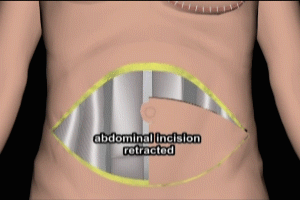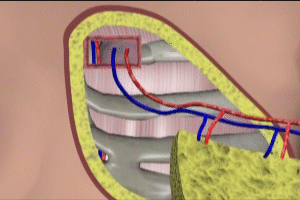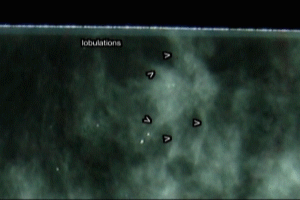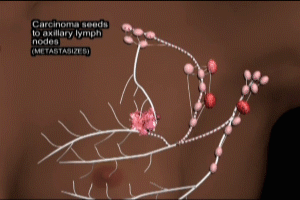Breast Reconstruction TRAM Transcript
Breast Reconstruction TRAM Transcript
This is Doctor Cal Shipley with a review of the TRAM breast reconstruction procedure. The term TRAM is an acronym for Transverse Rectus Abdominis Myocutaneous flap procedure.
TRAM Breast Reconstruction: Abdominal Wall Anatomy
Let’s take a look at the anatomy of the abdominal wall. Just beneath the skin layers, even in lean individuals, lies a fairly thick fat pad which covers the entirety of the abdomen. The fascia helps to stabilize the muscle’s position within the abdomen and also makes it easier for muscles to work in concert.
In this image, I have highlighted these sheathes surrounding the rectus abdominis muscles. Here we see the rectus abdominis muscles with the fascia removed. Now let’s take a look at the blood supply to the rectus muscles.
TRAM Breast Reconstruction: epigastric arteries
Blood flow to the rectus muscles arises from the deep inferior epigastric arteries which themselves arise from the iliac arteries in the pelvis. The deep inferior epigastric arteries are often known by the acronym D-I-E-P or DIEP.
The deep inferior epigastrics not only supply blood to the rectus muscles, but also to the overlying fat layer and skin of the abdominal wall. The superior epigastric arteries, which arise from the internal mammary arteries, also supply blood flow to the rectus muscles as well as the fat and skin layers of the abdominal wall. There is an arborization area of blood vessels between the superior and inferior epigastric arteries. In the area of arborization, the blood vessels become very small.
This greatly reduces the blood flow beyond the point of arborization. As a result, these superior epigastric arteries supply the non-dominant blood flow to the lower rectus muscles. The deep inferior epigastric arteries then are the dominant blood supply to the lower rectus muscles. The dependence of the skin island on the non-dominant arterial supply in the TRAM procedure decreases the chances of success postoperatively compared to the alternative D-I-E-P or DIEP procedure, which I will be discussing in a subsequent video.
TRAM Breast Reconstruction: rectus sheath and perforator arteries
Let’s return now to a further exploration of the anatomy of the abdominal wall. The rectus sheath is a membrane which surrounds the rectus muscles and attaches the muscles to the fatty layer of the abdominal wall. A triangular shaped portion of the abdominal wall consisting of skin, fat layer and blood supply, and known as a skin island is used to reconstruct the breast. Let’s take a look at the anatomy. Here we see the rectus sheath again surrounding the rectus muscle.
Here are a set of arteries known as perforator arteries which actually supply the blood to the fat and skin layer of the skin island. The perforator arteries are so named because they arise from the deep inferior epigastric arteries, and then perforate the rectus muscles to reach the fatty layer of the skin island. Having reviewed the relevant anatomy, let’s take a look at the TRAM procedure itself.
TRAM Breast Reconstruction Procedure
The TRAM procedure we’re going to look at today involves a patient in whom a right-sided skin island was already used to perform what is known as a DIEP or D-I-E-P procedure, which is an alternative procedure to the TRAM which I will be covering in a subsequent video. To begin the procedure, a triangular incision is made in the abdominal wall. The incision is then pulled upward to expose the rectus sheath which is stripped away from the rectus muscle.
The portion of the sheath beneath the skin island is left intact to assure its connection. The skin island must now be freed of its attachments so that it may be rotated up into the chest wall. First, the rectus muscle is detached from its connection to the pubic bone. Next, the deep inferior epigastric artery and vein attachments are cut and clipped. As touched on earlier, the skin island is now completely dependent for blood supply on the non-dominant superior epigastric artery. This is a less than ideal but unavoidable aspect of the TRAM procedure.
The exposed portion of the rectus muscle is now detached from the sheath behind it. The skin island is now ready for placement in the chest. A tunnel is created in the deep tissues, also known as the fascia, of the abdominal and chest walls, and the skin island is pushed up through the tunnel and out through an incision made at the site of the previous mastectomy. The rectus muscle, containing the blood supply to the skin island and still attached to the skin island via the rectus sheath, comes along as well.
The rectus muscle acts as a sort of bridge for the blood vessels going to the skin island, protecting them and preventing them from kinking. The rectus sheath, meanwhile, maintains the rectus muscle’s attachment to the skin island. Brisk bleeding from the skin island indicates adequate blood flow. The skin island is then shaped and inserted and attached to the preexisting incision. Once the skin island has been attached, continuing adequate blood flow may be ascertained through assessment of capillary refill.
With normal capillary refill, the skin will blanch with pressure and on release of pressure, return to normal skin color within three seconds. Because the rectus muscle must be detached from its normal position and function within the abdominal wall, post-operative herniations and abdominal weakness are major issues for patients undergoing the TRAM procedure.
Because the D-I-E-P or DIEP breast reconstruction procedure avoids these issues, it has become the more popular alternative to the TRAM procedure in recent years. However, for reasons which I will discuss in my separate video on the DIEP procedure, the DIEP is not always possible in all patients.
Cal Shipley, M,D. copyright 2020




